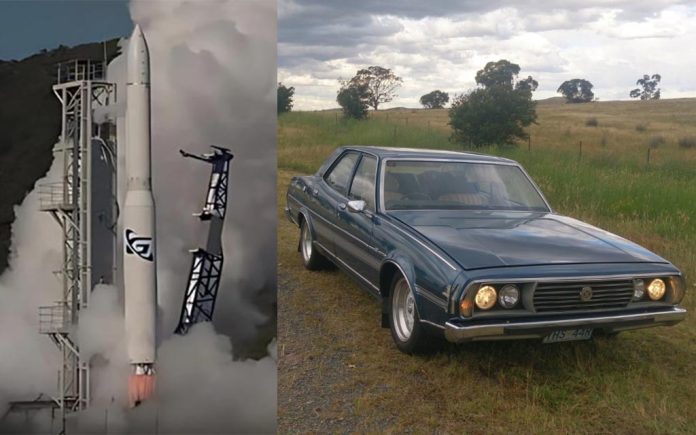
ERROL PARKER | Editor-at-large | Contact
Australia’s ambitions in space were well and truly off the ground this week, after a state-of-the-art orbital rocket from Gilmour Space Technologies managed to climb roughly the height of a light pole before crashing spectacularly into the Queensland dirt.
The 23-metre Eris rocket, which lifted off from a launch pad near Bowen on Monday morning, achieved flight for approximately 14 seconds before returning to Earth in what engineers are calling a “controlled” and “dignified self-disassembly.”
Despite the alternative success, the launch has been chee-hooed by industry experts, federal ministers and Bowen small businesspeople as a significant leap forward for the nation’s commercial space sector.
“It’s the Leyland P76 of rockets,” said a Gilmour spokesperson.
“A bit misunderstood. A bit wobbly. Bit rough around the edges but ahead of its time.”
The reference to the nation’s most infamous automotive flop was not lost on observers. First rolled out in 1973, the Leyland P76 was an attempt to build a homegrown rival to Ford and Holden. Marketed as a bold step into the future, the car quickly gained a reputation for poor build quality, unpredictable handling and catching fire when even slightly overheated. It was discontinued within two years.
Gilmour, who is reportedly planning another launch attempt within months, said early indicators suggest an engine failure may have cut short the rocket’s maiden flight. He confirmed a second model is already being prepared, with hopes that it may stay airborne long enough to clear Bowen, which is a primary concern among locals.
Federal Science Minister Ed Husic said the launch represented a turning point for Australia’s sovereign launch capability.
“Yeah this is fucking sick, isn’t it? For too long, our young people have had to go to NASA or defect to Iran to follow their rocket dreams. Now they can aim higher,” he said.
The event drew a modest crowd of onlookers, including several Bowen residents and a handful of camera crews who arrived to find the rocket disassembled neatly next to the launch pad.
Industry experts have praised the effort, noting that failure is a vital step in aerospace success, particularly on this dry rock in the South Pacific, where most space infrastructure is located in paddocks far from anything.
More to come.










